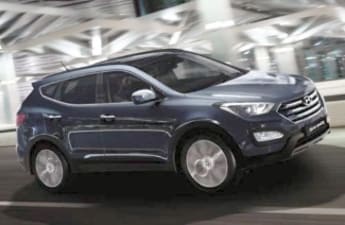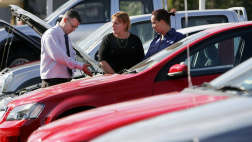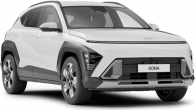Now that its most popular SUV sells for beyond $50,000, any notion Hyundai is "cheap and cheerful" must disappear.
This sales fact illustrates Australian customer acceptance and cements the brand as a shopping list staple, says product planner Andrew Tuitahi.
"We're extremely pleased that people are spending more than $50,000 on a Hyundai," he says. "We've passed the barbecue test" - a reference to the stereotyped car-dominated conversation of males around the weekend barbecue.
The 2015 Santa Fe, launched this week, is Hyundai's largest SUV and now costs from $38,490 to $53,240.

Significantly, 49 per cent of sales are for the most expensive Highlander model, which for 2015 gains extra equipment and a $1250 price rise to $53,240.
Now, with the mid-$50K price hurdle cleared, Hyundai says it is confident its circa-$60,000 Genesis sedan will find friends, especially as its Australian large-car rear-drive competitors queue for their swan song.
The Genesis, here early next year, will add to the company's passenger-car sales success which now has it second in the segment behind Toyota.
For now, the Santa Fe maintains momentum. For 2015 it keeps its three trim levels - Active, Elite and Highlander - and makes small adjustments in equipment and price.
There's not much to pick the changes to the 2015 model, though subtle frontal tweaks add daytime running lights and static cornering lights to the Active. The price is unchanged, starting at $38,490, with automatic adding $2500.
The Active has the sole petrol and manual options.
The mid-model Elite gains a power tailgate and the price rises by $500 to $48,490. The tailgate (standard on the Highlander) operates by proximity to the key fob and doesn't require swiping of the feet or hands to activate.
For the Highlander, Hyundai adds front park sensors, heated seats (the front pair also ventilated), parking assistance (parallel parking only) and extra safety in the form of lane-departure warning. The panoramic sunroof can be operated with the ignition off.
All models retain seven seats. There are alloy wheels - 19-inchers on the Highlander - and a full-size spare.
The Elite and Highlander carry over the 145kW/421Nm 2.2-litre turbo diesel, which claims 7.3L/100km.
Cabin trim remains unchanged. Befitting its class, the seven-seater has versatile and flexible seating or cargo room with flat-folding third-row seats. The middle row's centre seat does this also and adds fore-aft adjustment.
Chassis updates improve ride and handling. Tuitahi says Australian-based engineers "tweaked"- the suspension with new bushes and bearings to reduce harshness.
The electric-assist steering - for which the driver can scroll through three levels of firmness via a wheel-mounted control - now responds more quickly to inputs.
Driving
Current Sante Fe owners will be familiar with its characteristics and most is unchanged. There is minor improvement in steering feel but ride and handling stay consistent.
A big wagon in a category not noted for handling prowess, the Santa Fe is a good compromise, remembering its primary use is family duty.
The seats are flat and formless yet this aids access. The diesel is a firm favourite and can embarrass similar engines fitted in European SUVs. The six-speed auto's ratios suit the lazy diesel though sometimes it's reluctant to downshift to minimise fuel use.
There are no steering wheel paddle-shifters though the box can be used manually via the gear selector. Despite its size it's agile but needs its standard rear camera and park sensors.
Hyundai Santa FE 2015: Active (4x4)
| Engine Type | Inline 4, 2.4L |
|---|---|
| Fuel Type | Unleaded Petrol |
| Fuel Efficiency | 9.4L/100km (combined) |
| Seating | 7 |
| Price From | $12,980 - $17,380 |
| Safety Rating |
|
Verdict
A better mousetrap. The fact there are so many of these SUVs on the road says it all.
Pricing Guides

.jpg)
.jpg)
.jpg)
.jpg)
.jpg)
.jpg)
.jpg)
.jpg)


.jpg)
.jpg)







.png)










-W.jpg)

.jpg)

